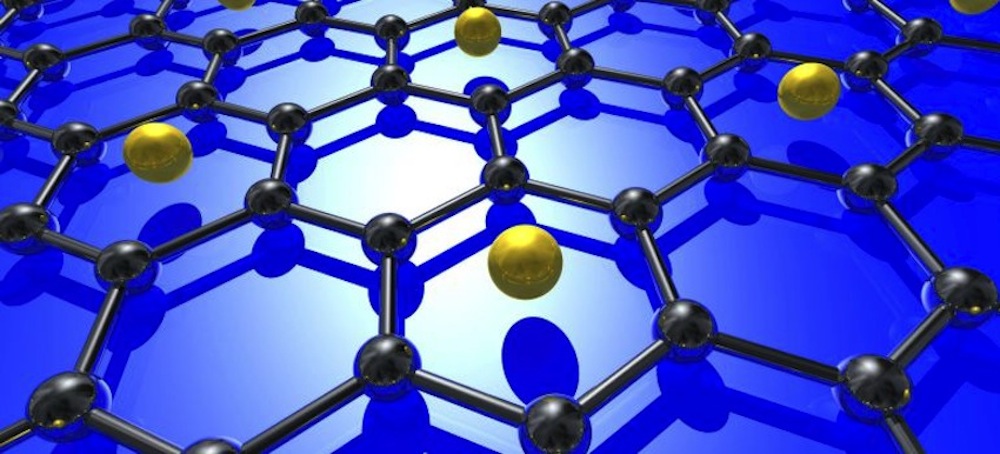Graphene Is Turned into Zero-Resistance Wonder Material

Atom-thin layers of carbon can be turned into superconductors — extraordinary materials that conduct electricity without dissipating energy, physicists say. The findings could help lead to advanced magnetic sensors for brain scanning, the researchers added.
The form of carbon found in pencils is graphite, which is made of sheets of carbon stacked atop each other. The sheets are known as graphene, and they are made of a single layer of carbon atoms arranged in a honeycomb pattern.
Graphene is extraordinarily strong — about 200 times stronger than steel by weight. Graphene is also highly electrically conductive, and scientists worldwide are researching whether it could be used in advanced circuitry and other electronic devices. [8 Chemical Elements You've Never Heard Of]
Although graphene has many spectacular electronic properties, until now superconductivity was a notable exception. Superconductors conduct electricity with zero resistance, and so can lead to more efficient power lines. (Power companies typically lose about 7 percent of their energy to heat caused by resistance in transmission wires.)
Superconductivity was previously seen in graphite. Theoretical models suggested that graphene could also become superconducting, if adorned with additives.
Now, an international team of scientists has created the first-ever superconducting graphene by coating it with lithium atoms.
"Many groups have tried for many years to achieve superconductivity with graphene,"study principal investigator Andrea Damascelli, director of the University of British Columbia's Quantum Matter Institute in Vancouver, told Live Science. "The way you prepare the samples is key."
Sign up for the Live Science daily newsletter now
Get the world’s most fascinating discoveries delivered straight to your inbox.
Scientists at the Max Planck Institute for Solid State Research in Stuttgart, Germany, created the graphene sheets. Researchers at the University of British Columbia then coated the graphene with lithium atoms.
Previous attempts to create superconducting lithium-coated graphene failed because the coating techniques introduced sources of instability, such as warmth. This instability made lithium atoms scatter around in ways that kept the graphene from superconducting.
Instead, Damascelli and his colleagues coated their graphene sheets with lithium in ultra-high-vacuum conditions at about minus 450 degrees Fahrenheit (minus 268 degrees Celsius), just about 5 degrees above absolute zero.
Superconductivity relies on electrons not repelling each other as they do in ordinary materials, but instead forming delicate pairs that can flow through superconductors effortlessly. Electrons in these pairs are held together by phonons, or vibrations of the superconductor's atoms. The lithium atoms enhanced the phonon-binding of electrons in the graphene, allowing superconductivity to occur at minus 449 degrees F (minus 267 degrees C).
The researchers do not think superconducting graphene will be used to develop more efficient power lines. Rather, Damascelli suggests it could be used in extraordinarily sensitive magnetic sensors known as SQUIDs, or superconducting quantum interference devices, which can scan brain activity with exquisite detail.
"It could lead to a 100-fold increase in the sensitivities we currently have," Damascelli said. "That's where superconductivity could really have a huge impact."
The researchers hope to better understand the nature of graphene's superconductivity, which could help them find ways to make it superconduct at warmer temperatures, Damascelli said.
The scientists detailed their findings online Sept. 7 in the journal Proceedings of the National Academy of Sciences.
Follow Live Science @livescience, Facebook & Google+. Original article on Live Science.











